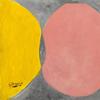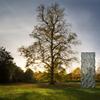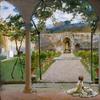A RECORD IS SHATTERED: ASIA WEEK NEW YORK SALES HIT $200 MILLION
- NEW YORK, New York
- /
- April 01, 2014

Asia Week New York—the nine-day Asian art extravaganza—ended on a stupendous note: $200 million in sales, exceeding last year’s number by $25 million.
From the minute the 47 international galleries of Asia Week New York opened their doors on March 14, a whirlwind of activities invigorated the city. The annual event was celebrated with a magnificent reception at the Metropolitan Museum of Art on March 17, where the United Nations Secretary General Ban Ki-moon welcomed more than 600 collectors, curators and Asian art specialists. The event ignited excitement that burned for the entire week, and the Asian art world buzzed with exhibitions and record-breaking auctions that were thronged with international buyers from mainland China, Taiwan, India, Japan, Korea and the United States.
“With an increase in overseas Chinese buyers, combined with many American museum curators and their patrons, Asia Week New York was a tremendous success this year,” says Carol Conover, chairman of Asia Week New York. “A record number of galleries—47—saw steady and heavy traffic throughout the week, and the four major auction houses saw sales reach new highs.”
Adds Conover, who, in addition to her role as chair of Asia Week New York, is gallery director of Kaikodo LLC: “This was the best Asia Week my gallery has had since this initiative started six years ago. We saw many American clients we had not seen in the last few years, and of course, many more new Chinese buyers. There was great museum interest from institutions both in the U.S. and from abroad, and there was a definite increase in Chinese buyers.” Among the items Kaikodo sold were Horse with Trailing Reins and Inattentive Groom by an unknown artist (16th-early 17th century); a large Underglaze Blue Decorated Jar, Late Ming Dynasty, first half 17th century; and Lotus Pond in Summer, 2010, by Mansheng Wang (born 1962).

Conover said that museum curators from all corners of the country and the globe flooded Asia Week New York, including the Asian Art Museum in San Francisco; the Phoenix Art Museum; Rubin Museum of Art in New York; the Metropolitan Museum of Art; the Solomon R. Guggenheim Museum; Brooklyn Museum; Museum of Fine Arts, Boston; China Institute; Asia Society; Clark Center for Japanese Art and Culture, Hanford, California.; the Smithsonian Institution; the Peabody Essex Museum, Salem, Massachusettsthe Minneapolis Institute of Art; the Portland Museum,in Oregon; the Morgan Library; the American Museum of Natural History; the Philadelphia Museum of Art; the Baltimore Museum of Art; the Mingei International Museum, San Diego; the Kruizenga Art Museum, Holland, Michigan.; the Crow Collection, Dallas; the Newark Museum; the Samuel P. Harn Museum—University of Florida; Japan Society; the Indianapolis Museum of Art; the Worcester Art Museum, Massachusetts; the Burke Foundation; the Cleveland Museum of Art; the Spencer Museum—University of Kansas; the Detroit Institute of Art; the Smart Museum—University of Chicago; the University of Michigan Museum of Art; the Kimball Art Museum; the Yale University Art Gallery; the Berkeley Art Museum; and the Cincinnati Art Museum. From Europe were curators from the British Museum and Musée Cernuschi in Paris.

Accolades for Asia Week New York poured in from every quarter, as evidenced by the remarks of the participants:
“I found Asia Week New York absolutely thrilling!” enthused first-time participant Gisèle Croës, the specialist in ancient Chinese art from Brussels whose exhibition took place at the Gagosian Gallery. “For me, it was a complete success, as I met many new Chinese buyers and was pleased to welcome my regular clients. Sales were excellent.”
Another first-time Asia Week New York participant was Michael Goedhuis, a Chinese contemporary specialist from London who sold two-thirds of his featured artist, Wei Ligang. Said Goedhuis: “Asia Week has become a central magnet for an international audience, increasingly reinforced by an ebullient and aggressively acquisitive battalion of core Chinese collectors, a unit of which swept through our exhibition for Wei Ligang at Mallett.”
Chinese specialist James Lally of J.J. Lally & Co. in New York said: “The results achieved during Asia Week were beyond satisfactory. I am glad to say that we had more collectors from China, Taiwan and Hong Kong participating this year than ever before, in every category and at every level.
“We did very well this week and had increased interest from museums,” said Nicholas Grindley, another purveyor of traditional Chinese works of art. He reported sales to major museums both in the U.S. and abroad, as well as to new Chinese buyers.
Said Himalayan specialist Walter Arader: “This was the strongest Asia Week yet, and it appears that the market is still growing. I was very pleased with the events and sales numbers.” Among the pieces he sold were a 16th-century green Tibetan Tara; a Yama Dharmaraja, China, Qianlong; and a 15th_century Tibetan Buddha.
Conor Mahoney of the New York-based Chinese Porcelain Company observed: “Due to the high quality of exhibitions, we noticed that Asia Week New York attracted a record number of Asian buyers.” Among the sales were Lotus Pod I & II, an ink drawing by Zhao Xu, 2013, and a rare Yue Yao stoneware lamp from the Western Jin Dynasty, 265–316 A.D.
Paris-based Christophe Hioco said, “We were pleased to meet so many visitors, both museum curators and American collectors, with a strong knowledge ofIndian art.” He reported that 50 percent of his sales were to museums.
Also here from Paris was Antoine Barrère, who was delighted to see his regular clients as well as new people who expressed a great deal of interest. He also stated that he felt he developed more business contacts than ever before.
“Our gallery was overwhelmed with the influx of curators and academics from institutions across the country and Europe,” says Joan B. Mirviss, whose eponymous gallery features traditional and contemporary Japanese works of art. “From these experienced professionals, as well as seasoned collectors, the response to our carefully curated show, ‘Japan in Black and White: Ink and Clay,’ was incredibly enthusiastic. We were blessed with over 80 percent sales, by value, with nearly all the major works heading to new homes, both in museums and in private collections, domestic and international. It has been an extraordinary Asia Week!” exclaimed Ms. Mirviss.
Says Sue Ollemans of Susan Ollemans Oriental Art, London, “We had excellent sales with a strong increase of collectors from China and were very happy with the week.” Among the sales Ms. Ollemans reported were an 11th-century silver-gilt Liao crown; a pair of 19th-century Indian ruby and emerald shield bosses; an 18th-century Qing Dynasty gold ruby and pearl hairpiece; a 9th-century gold twisted ring from Java; a pair of blue glass swirl earrings, Dong Son, 700 B.C.; and a pair of 15th-century Timurid gold and pearl drop earrings, to name a few.
Marsha Vargas of the San Francisco-based Xanadu Gallery said that Asia Week New York was a good experience. “We sold a number of Tibetan ritual implements, including stupas and phurbas,” she said, adding that “Chinese buyers accounted for 95 percent of our sales.” A Chinese client purchased several Tibetan bronze stupas: one, a 15th-century gilt bronze stupa and the other, a 14th-century bronze. “We also had several Chinese clients who snapped up snuff bottles,” recounted Vargas, “and we sold seven to two different buyers during the week.” Other items sold were a Tibetan ritual phurba and several Himalayan bronzes.
“We experienced an enthusiastic reception to our show this year, particularly from our Chinese buyers, who thought the quality of what we brought with us was very high,” said Clare Chu, who with her husband, Michael, owns Asian Art Studio in Los Angeles. “We sold to new Chinese and Western buyers as well as to our regular clientele.”
Erik Schiess, of Portland, Oregon’s Jadestone Gallery, noted that collectors, many of whom were new, were more interested and serious about purchasing. Among the objects he sold were a very fine white jade snuff bottle from the 18th century, a Han Dynasty bronze Kettle and a Ming Dynasty Jade Bi.
Said Katherine Martin of Scholten Japanese Art: “Our exhibition of erotic Japanese art brought in more visitors than we can remember having in several years, although I can't say I am surprised.” Ms. Martin reports that a major cultural institution acquired three of Scholten’s complete shunga sets. She added: “Collectors were seduced by the great compositions, the amusing set-ups and dialogues, and the incredible preservation of original colors.”
“We have had a very strong response to our exhibition this year and have had many more visitors in particular on the first day and the open-house weekend,” said Brendan Lynch of the London-based Oliver Forge & Brendan Lynch. “We’ve had visits from about 15 museum curators and directors. Sales were good, reflecting quality over quantity.” As well as their usual collection of Indian miniature paintings, Lynch reported that on opening day a private New York collector took home a highly important 15th-century gilt-bronze plaque from the Densatil Monastery in Tibet, depicting four offering goddesses, for a six-figure sum. Oliver Forge & Brendan Lynch also sold a folio from a Persian Shahnama (King’s Book of Kings), circa 1660, signed by the artist—10 miniatures from the same manuscript are in the Metropolitan Museum of Art—to the Asian Civilisations Museum, Singapore. A West Coast collector bought an extraordinary “garden” picture of a lady drinking wine surrounded by exotic birds, attributed to Rahim Deccani, as well as a rare work by an enigmatic artist whose only signed work is in the Chester Beatty Library, Dublin.
“It has been a very exciting week, with dozens of new faces coming into the gallery every day,” said Eric Zetterquist of his eponymous gallery. “More than half of my exhibition is sold, with strongest interest coming from American clients and institutions. Since I am one of the only venues with a significant collection of early Chinese ceramics, specialists of the field from all over the world came to see the exhibition.”
“We are very happy,” said Carlton Rochell of New York. He reported one of his best Asia Weeks ever with over $5 million in sales, almost 30 objects sold, and new purchasers, especially from mainland China.
Carole Davenport reported numerous sales to a spectrum of buyers both old and new. Among the works sold were an early 8th-century clay attendant figure from one of the four tableaux at the base of the Horyu-ji Pagoda in Nara, a celadon Nabeshima kirin, a Jomon pot, Japanese porcelains, a Chinese Junyao vase, Chinese early lacquer ware, a Kasuga deer mandala and an 18th-century Japanese Nabeshima okimono of a kirin, made to order for the daimyo.
“The effort to communicate with Chinese buyers is important and this year we saw many more in our gallery,” said Carlo Cristi, the Asian textile specialist from Brussels. “I was extremely satisfied with the new contacts and subsequent sales that I made.” Among them were a bronze that represents Lama Sonam Namju, brother of the King of Mustang, 1444-1521, a famous abbot, and an important robe of the 4th to 6th century, along with some early gold objects from Central Asia.
This year, Asia Week New York welcomed a new partner: Presenting Sponsor Amanresorts, which spotlighted seven of its ne plus ultra resorts from four Asian countries, which include Amanfayun in Hangzhou, China, Aman at Summer Palace in Beijing, China, Amanbagh in Rajasthan, India, Aman-i-Khás in Ranthambore, India, Amangalla in Galle, Sri Lanka, Amanwella in Tangalle, Sri Lanka, and the Amankora in Bhutan.
Asia Week New York also continued its partnership with China Center New York, who returned for the second year as Supporting Sponsor. China Center is projected to open at One World Trade Center in early 2015, and will serve as a gateway for Chinese companies and individuals entering the US to connect with American entities seeking new opportunities with China.
Asia Week New York Association, Inc. is a 501(c)6 non-profit trade membership organization registered with the state of New York.
According to Ms. Conover, the 2015 dates for Asia Week New York are set for March 13–21.
For more information visit www.AsiaWeekNewYork.com
















